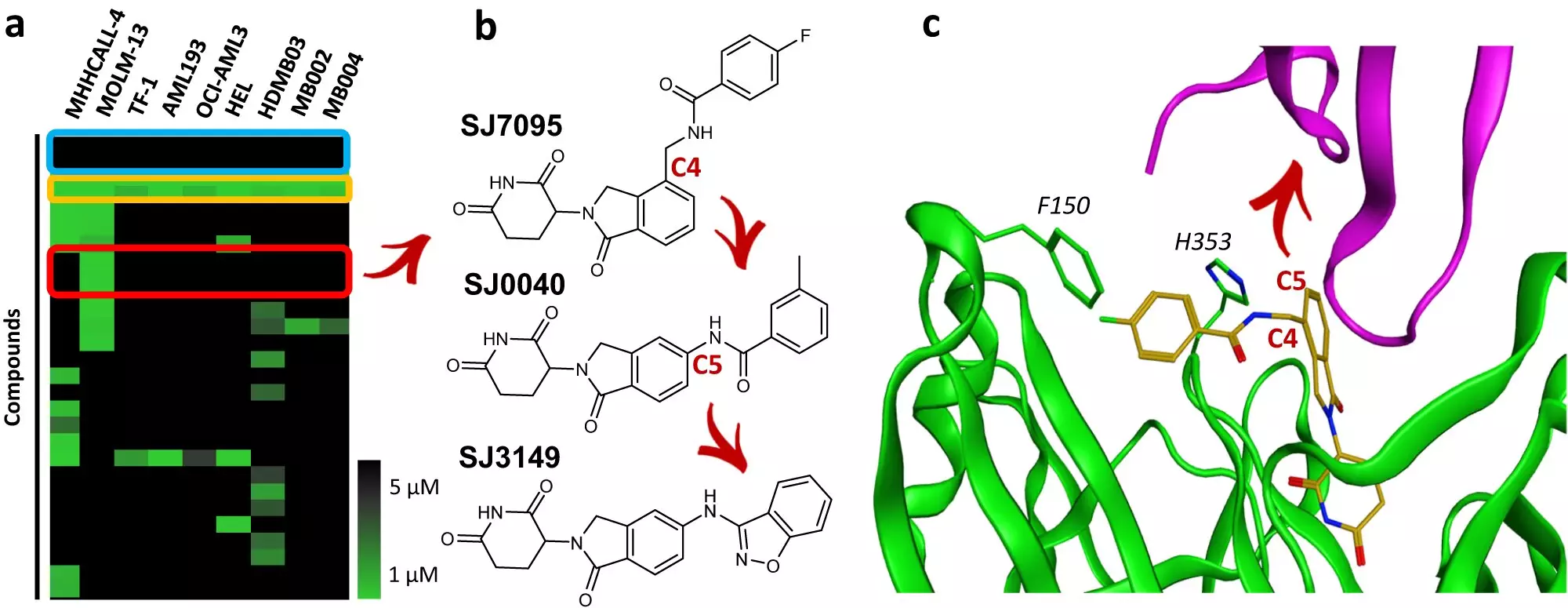Scientists at St. Jude Children’s Research Hospital have unveiled a groundbreaking discovery in cancer treatment. Their research highlights an innovative compound, SJ3149, which has displayed significant efficacy in combating numerous cancer types, particularly acute myeloid leukemia (AML). The findings have been published in the prestigious journal Nature Communications, garnering attention from the medical community and offering hope for improved cancer therapies.
The research team, led by senior co-corresponding author Dr. Zoran Rankovic from St. Jude’s Department of Chemical Biology and Therapeutics, describes SJ3149 as a “molecular super-glue.” This compound acts by binding to the cancer-related protein casein kinase 1 alpha (CK1α), leading to its destruction. By hijacking the cell’s natural protein recycling mechanism through a process called proteasomal degradation, SJ3149 targets cancer-associated proteins that are typically resistant to traditional small molecule inhibitors. This breakthrough offers a promising alternative therapeutic strategy for previously undruggable proteins.
Molecular glues hold immense potential in the quest for new cancer therapies, as they can target proteins that are otherwise challenging to inhibit. The scientists at St. Jude recognized this opportunity and developed a proprietary library of molecular glues, screening them against a range of cancer cell lines. This extensive screening process led to the identification of an initial hit, which was further optimized to create SJ3149. The resulting compound exhibited greater potency and fewer off-target effects compared to similar compounds, earning it the nickname “super-glue.”
SJ3149 not only demonstrated broad anti-cancer activity but also displayed a profile similar to that of approved cancer drugs known as murine double minute 2 (MDM2) inhibitors. This similarity suggests that SJ3149 could have significant clinical utility in treating various cancer types. The compound’s effectiveness opens up new possibilities for therapeutic interventions, while providing proof of concept for St. Jude’s approach to accelerate the process of discovering novel molecular glues.
To gain a deeper understanding of SJ3149’s mechanism of action, Dr. Marcus Fischer’s research group crystallized the complex formed by the compound and the targeted protein bound to the cell’s protein ubiquitin ligase apparatus responsible for protein degradation. Their findings revealed that SJ3149 directly interacts with CK1α, linking it to the enzyme that marks it for cellular degradation. This atomic-level knowledge lays the groundwork for the rational design of future molecular glues and further advances in cancer treatment.
While SJ3149 is currently considered a lead compound, its potential to become a viable treatment option for different pediatric cancers is highly encouraging. Dr. Jeffery Klco, a physician-scientist specializing in AML at St. Jude’s Department of Pathology, emphasizes the significance of this discovery. The collaborative effort involved in creating SJ3149, which included designing and synthesizing the molecular glue library, optimizing it through medicinal chemistry, and testing it in patient-derived cancer cells, sets the stage for future breakthroughs in cancer research.
The success of SJ3149 signifies a new era in chemical biology marked by the advent of molecular glues. Dr. Rankovic underlines the transformative potential of this approach, stating that “chemical biology has entered a new paradigm with molecular glues.” With the groundbreaking discovery of SJ3149, researchers at St. Jude have laid the foundation for further exploration and the development of innovative cancer treatments. This milestone brings renewed hope to patients and medical professionals alike, heralding a brighter future in the fight against cancer.



Leave a Reply